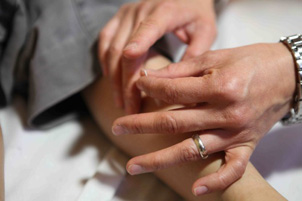Acupuncture
Types of Acupuncture
There are two types of acupuncture: contemporary medical acupuncture and Traditional Chinese acupuncture. In practice they look similar with the use of very fine needles placed at certain points in the body, but contemporary medical acupuncture is a more medical adaptation of Traditional Chinese acupuncture, which is what Suzanne practices.
What is Chinese Acupuncture?
Traditional Chinese acupuncture is part of a system of Traditional Chinese Medicine that developed as far back as 110 BCE. At that time, concepts of Meridians (or channels) in which the Qi (or energy) flowed were already well-established. Along these channels, there are openings through which acupuncture needles can be inserted to modify the flow of Qi.
The idea of Qi is fundamental to Chinese medicine – it is the energy that permeates the entire body – and maintaining it’s movement prevents disease. Another major feature of the body is a number of Organs, which work in unison with each other and with Qi. The Meridians are a series of invisible channels that carry Qi through the body, linking together all the Organs. Because the Meridian system unifies all parts of the body into a network, it is essential for the maintenance of balance. The Meridians also connect the interior of the body with the exterior, which is the basis of acupuncture theory. Working with the points on the surface of the body thus affect what goes on inside the body.
What Does Acupuncture Do?
Acupuncture involves the insertion of very fine needles into points along the Meridians to rebalance body disharmonies. The needles can reduce what is excessive, increase what is deficient, warm what is cold, cool what is hot, circulate what is stagnant, raise what is falling, and lower what is rising. Classical theory recognizes about 350 points, although most doctors use a repertoire of about 150 points.

How is a Diagnosis Made in Chinese Medicine?
Chinese medical diagnosis also relies on a tongue and pulse diagnosis, in addition to symptoms and signs. Looking at the tongue involves observing the colour, shape, movement, and moisture level of the coating. The tongue has been described as a piece of litmus paper that reveals the basic qualities of disharmony in the body. Pulse diagnosis is done by feeling the pulse on both wrists. There are three pulse locations on each wrist, each corresponding to certain Organs, indicating disharmonies in the Organs. Based on these tongue and pulse observations, Suzanne weaves the information together into a diagnosis and an acupuncture treatment. As a naturopathic doctor, she does acupuncture as part of your personalized naturopathic treatment plan because how you live day-to-day and what foods you eat promote self-care and health between acupuncture treatments.
